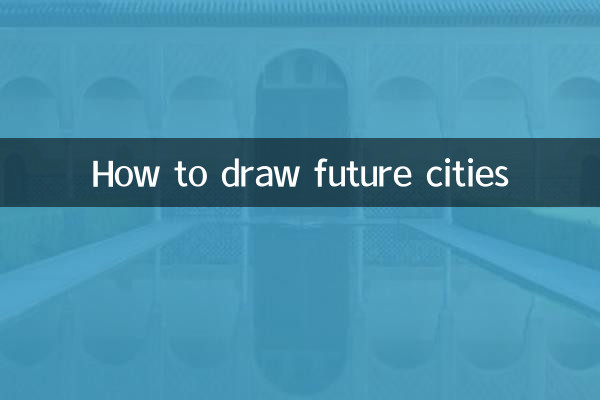How to draw future cities
With the rapid development of science and technology and the acceleration of urbanization, the blueprint for future cities is being hotly discussed around the world. From smart transportation to green buildings, from digital twins to carbon neutrality goals, what the future city will look like is being outlined bit by bit. This article will combine hot topics and hot content in the past 10 days to discuss the design direction of future cities and display relevant trends through structured data.
1. Core elements of future cities

The construction of future cities is inseparable from the following core elements:
| elements | Description | Popular cases |
|---|---|---|
| Intelligent transportation | Autonomous driving, smart traffic lights, shared travel | Musk announces Tesla Robotaxi plan |
| green building | Zero-energy buildings, vertical greening, sustainable materials | Singapore’s “Super Tree” project |
| digital twin | Virtual city model, real-time data simulation | Shanghai “Digital Twin City” Pilot |
| carbon neutral | Renewable energy, carbon capture technology | EU’s “Green New Deal” 2030 goals |
2. Hot topics in future cities
In the past 10 days, global discussions on future cities have mainly focused on the following topics:
| topic | heat index | key events |
|---|---|---|
| Autonomous driving | ★★★★★ | Waymo approved to operate commercially in San Francisco |
| metaverse city | ★★★★ | Seoul, South Korea announces construction of "Metaverse City" |
| vertical farming | ★★★ | Dubai vertical farm produces record-breaking output |
| Smart energy | ★★★ | Germany passes 100% renewable energy bill |
3. Challenges and Opportunities of Future Cities
While the prospects for future cities are exciting, they also face many challenges. Here is a comparison of the main current challenges and opportunities:
| challenge | opportunity |
|---|---|
| Data privacy issues | Application of Blockchain Technology |
| Infrastructure renovation costs are high | Innovation in cooperation models between government and enterprises |
| Technical standards are not unified | International organizations promote the standardization process |
| Low public acceptance | The rise of public participatory design |
4. Global Practice of Future Cities
Many cities around the world have begun to try to build future cities. The following are recent cases worthy of attention:
| city | Project | Features |
|---|---|---|
| Tokyo | "Super City" plan | AI comprehensively manages city operations |
| copenhagen | carbon neutral city | Become carbon neutral by 2025 |
| dubai | museum of the future | Presenting the 2071 City Vision |
| Shenzhen | Digital RMB Pilot | Fintech integrates into urban life |
5. How to participate in the construction of future cities
The construction of future cities requires the participation of the whole society. Here are actions individuals and organizations can take:
1.Personal level:Learn digital skills, adapt to smart lifestyles, and participate in urban planning discussions.
2.Enterprise level:Invest in green technology, develop smart solutions, and collaborate with governments to innovate.
3.Government level:Formulate forward-looking policies, build digital infrastructure, and promote international cooperation.
The picture of the future city is slowly unfolding in front of us, and everyone is the creator of this picture. Through technological innovation and social collaboration, we will surely create a better and more sustainable urban future.

check the details

check the details